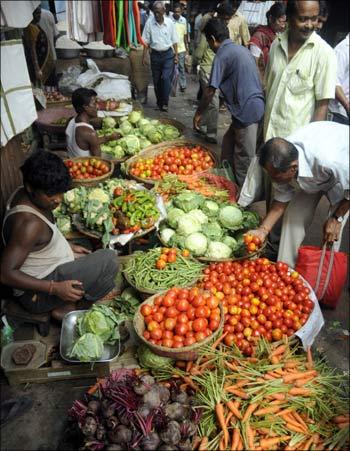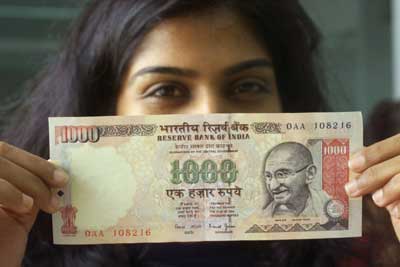 | « Back to article | Print this article |
India's 'misery index' shooting up: What this means
India's 'misery index' is shooting up.
The index, a formulation of economist Arthur Okun and got by adding the proportion of unemployment to the inflation rate, is a popular measure in the developed world to judge economic well-being.
India's was at 20 in 2010, the highest since 2003, as both inflation and unemployment rose after the global economic crisis in 2008-09.
Most economists, however, do not track the index in India.
"A misery index may have limited relevance in a country like India, with substantial disguised unemployment in the agricultural sector, which continues to employ a large proportion of the labour force," says Aditi Nayar, economist at rating agency Icra.
Click NEXT to read further. . .
India's 'misery index' shooting up: What this means
"Unlike in the past where the economic growth used to be low, today despite higher inflation, unemployment rates and the misery index going up, people are still better off, given the higher economic growth," says Sachchidanand Shukla, economist with Enam Securities.
Economists are predicting inflation should come down to about seven to eight per cent by the end of March.
Recently easing food inflation has helped. Economists said a lot would depend on global commodity prices, especially how global crude oil prices behave and the state of the monsoon in the coming months.
Click NEXT to read further. . .
India's 'misery index' shooting up: What this means
Worries
According to the reports, India is more vulnerable with every rise in global food prices. For instance, UBS Global Economic Research has devised another index called the UBS Food Price Misery Index.
These indices are calculated by summing the inflation response, interest rate response and the gross domestic product response with the increase in the global food prices.
According to its recent report, titled 'Food Shock', Turkey, Brazil and India are likely to see the biggest degree of food-related misery or pain from a sustained increase in global food prices.
Click NEXT to read further. . .
India's 'misery index' shooting up: What this means
Besides inflation, the other critical component of the misery index is unemployment. India's unemployment in percentage terms was better at an average of 7.5 during 2007 and 2008, when the economy grew in excess of nine per cent yearly.
However, it again slipped to an average 10.7 per cent during 2009 and 2010, as a result of slowing in the economy and global financial crisis' impact.
So, from 13.3 in 2007 and 2008, the misery index crossed 20. Economists said the good news was that the job situation was improving as a result of economic recovery.
Click NEXT to read further. . .
India's 'misery index' shooting up: What this means
"It is likely that some of the jobs lost post the global economic crisis would have been restored, particularly in labour-intensive export sectors, while the domestic economic recovery would have supported a net addition of jobs," says Nayar.
However, high crude oil prices are a big worry.
"Research shows if crude oil prices cross the $120-mark, US consumers start getting hit and this impacts consumption and economic growth.
"At that level, it will definitely hit emerging economies, including India.
From India's perspective, every $10-increase in crude oil prices could put an additional 30-basis point pressure on the fiscal deficit, signalling higher government borrowing, resulting in a hardening of interest rates. This could lead to pressure on economic growth," said Shukla.





